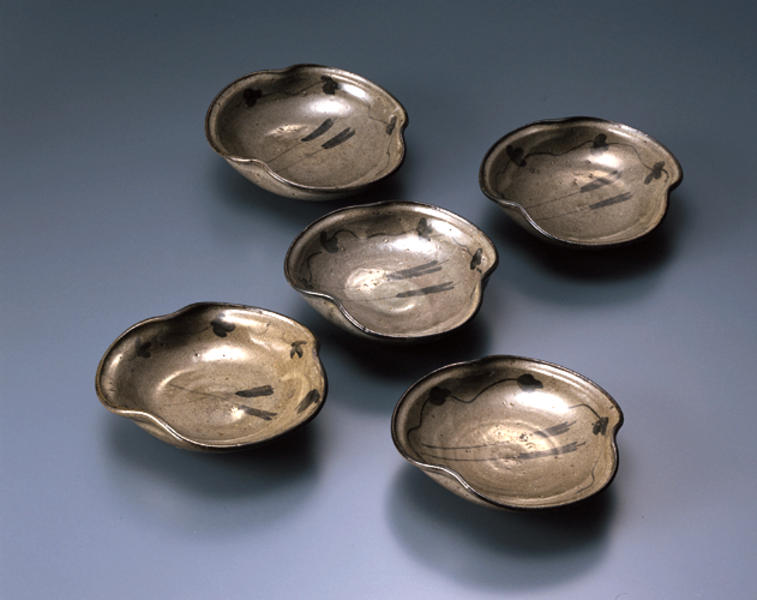E-Karatsu Mukozuke with Arrow Design
- Karatsu kiln, Saga pref.
- Momoyama to Edo periods
- 17th century
- Karatsu ware
- H-4.6 D-16
Catalogue Entry
Set of 5 dishes
Momoyama to Edo periods, 17th century
Karatsu ware, E-garatsu type
Height, 4.6cm; mouth diameter, 16.0cm
There are a considerable number of Karatsu ware mukozuke dishes which were made in a manner very similar to that seen in mukozuke dishes fired at the Mino kilns. During the Keicho period (1596-1615), the consecutive-chamber climbing kiln form used at Karatsu was introduced to the Motoyashiki kilns at Mino, and this fact would indicate that there had been frequent interaction between the Mino kilns and the Karatsu kilns prior to this date. These mukozuke dishes are of the nearly flat mukozuke type known as the "sandy beach" shape, and there were also mukozuke dishes of this shape produced at the Mino kilns. However, the arrow pattern seen in the interior of these dishes is a specifically Karatsu motif and can be found on both mukozuke dishes and other bowl forms.
One dish among these 5 shows crossed arrows as opposed to the parallel arrangement seen on the other four. As there are other examples of this kind of mixed pattern among mukozuke dishes, we can suggest that this group was intended to originally form a set. In addition to the arrow motifs drawn in the center of the interior of each dish, the edges of the dishes are outlined, and the low sides of the interior are decorated with a karakusa vining plant pattern. All decorative motifs have been drawn in underglaze iron. The bottom of the dishes show a small foot, and the iron-rich body clay is exposed and visible near the foot. TA
